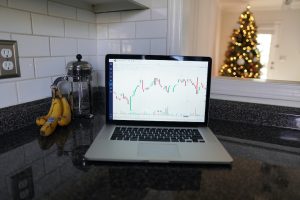Forex trading is a complex and dynamic market. One of the most important aspects of successful forex trading is the ability to determine the long-term trend. The long-term trend is the overall direction that a currency pair is moving over a relatively extended period of time. Identifying the long-term trend is critical because it provides traders with valuable information on the direction of the market, which is essential for making informed trading decisions. In this article, we will discuss how to determine the long-term trend in forex.
What is the Long-term Trend in Forex?
The long-term trend in forex refers to the overall direction that a currency pair is moving over a prolonged period of time. It is typically defined as a trend that lasts for several months or even years. The long-term trend is an essential element of forex trading, as it provides traders with valuable information on the direction of the market. Understanding the long-term trend is crucial because it affects the overall success of a trader’s trades.
How to Determine the Long-term Trend in Forex?
There are several ways to determine the long-term trend in forex, and each method has its advantages and disadvantages. Here are some of the most popular ways to determine the long-term trend:
1. Moving Averages:
Moving averages are one of the most popular ways to determine the long-term trend in forex. A moving average is a line that represents the average price of a currency pair over a particular period. The most commonly used moving averages are the 50-day and 200-day moving averages. When the 50-day moving average is above the 200-day moving average, it indicates an uptrend, and when the 50-day moving average is below the 200-day moving average, it indicates a downtrend.
2. Trend Lines:
Trend lines are another popular way to determine the long-term trend in forex. A trend line is a line that connects the highs or lows of a currency pair over a particular period. To draw a trend line, you need to connect at least two highs or lows. When the trend line is sloping up, it indicates an uptrend, and when the trend line is sloping down, it indicates a downtrend.
3. Fibonacci Retracement:
Fibonacci retracement is a popular tool used by traders to determine the long-term trend in forex. Fibonacci retracement uses a series of numbers that are based on the Fibonacci sequence. Traders use these numbers to identify potential support and resistance levels. When the currency pair is above the 61.8% Fibonacci retracement level, it indicates an uptrend, and when the currency pair is below the 61.8% Fibonacci retracement level, it indicates a downtrend.
4. Price Action:
Price action is a popular way to determine the long-term trend in forex. Price action refers to the movement of a currency pair over a particular period. Traders use price action to identify potential support and resistance levels. When the currency pair is making higher highs and higher lows, it indicates an uptrend, and when the currency pair is making lower highs and lower lows, it indicates a downtrend.
Conclusion:
Determining the long-term trend in forex is critical for successful trading. There are several ways to determine the long-term trend, including moving averages, trend lines, Fibonacci retracement, and price action. Each method has its advantages and disadvantages, and traders should choose the method that works best for them. By understanding the long-term trend, traders can make informed trading decisions and increase their chances of success.





